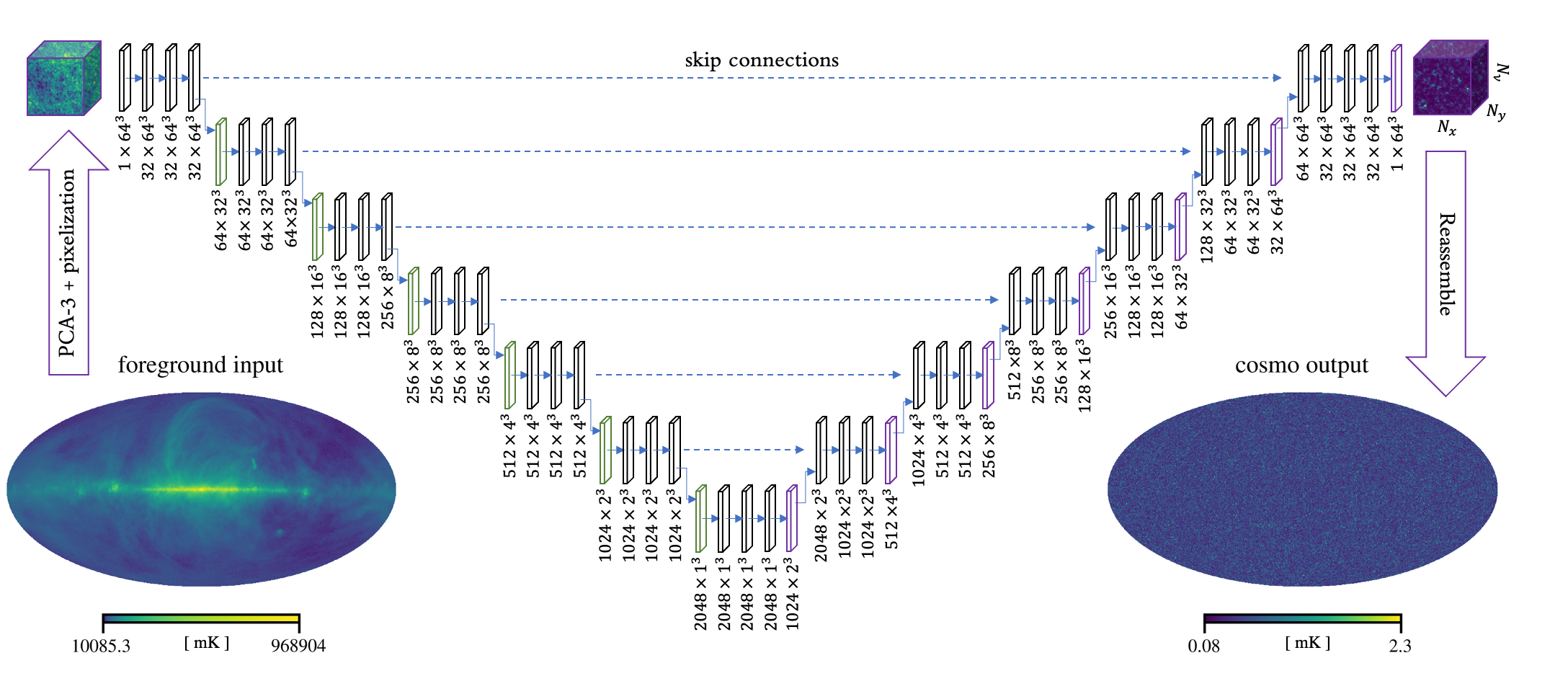Blind foreground subtraction for intensity mapping experiments
We make use of a large set of fast simulations of an intensity mapping experiment with characteristics similar to those expected of the Square Kilometre Array (SKA) in order to study the viability and limits of blind foreground subtraction techniques. In particular, we consider different approaches: polynomial fitting, principal component analysis (PCA) and independent component analysis (ICA). We review the motivations and algorithms for the three methods, and show that they can all be described, using the same mathematical framework, as different approaches to the blind source separation problem. We study the efficiency of foreground subtraction both in the angular and radial (frequency) directions, as well as the dependence of this efficiency on different instrumental and modelling parameters. For well-behaved foregrounds and instrumental effects we find that foreground subtraction can be successful to a reasonable level on most scales of interest. We also quantify the effect that the cleaning has on the recovered signal and power spectra. Interestingly, we find that the three methods yield quantitatively similar results, with PCA and ICA being almost equivalent.
PDF Abstract